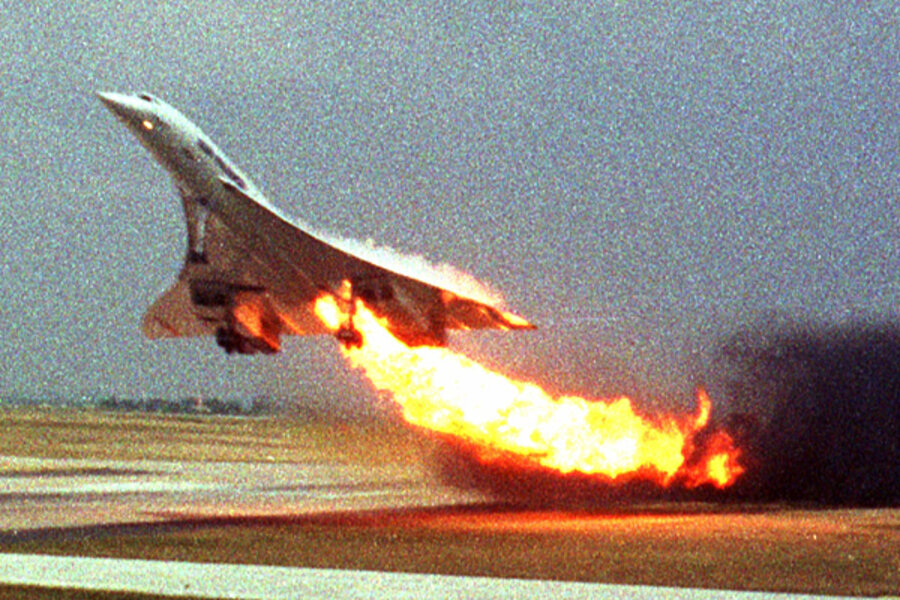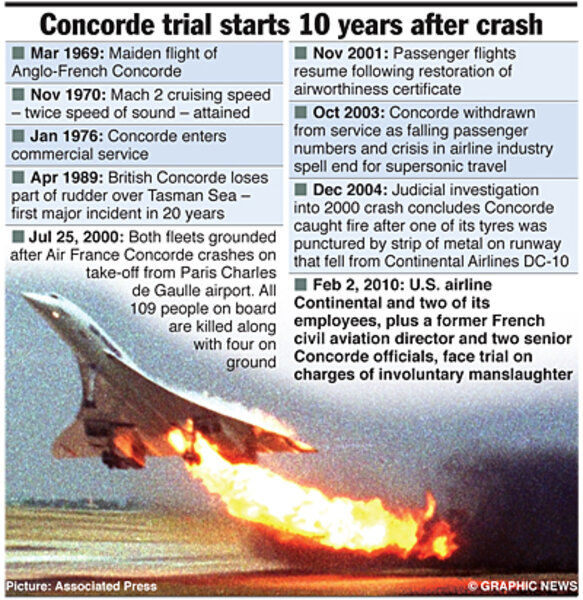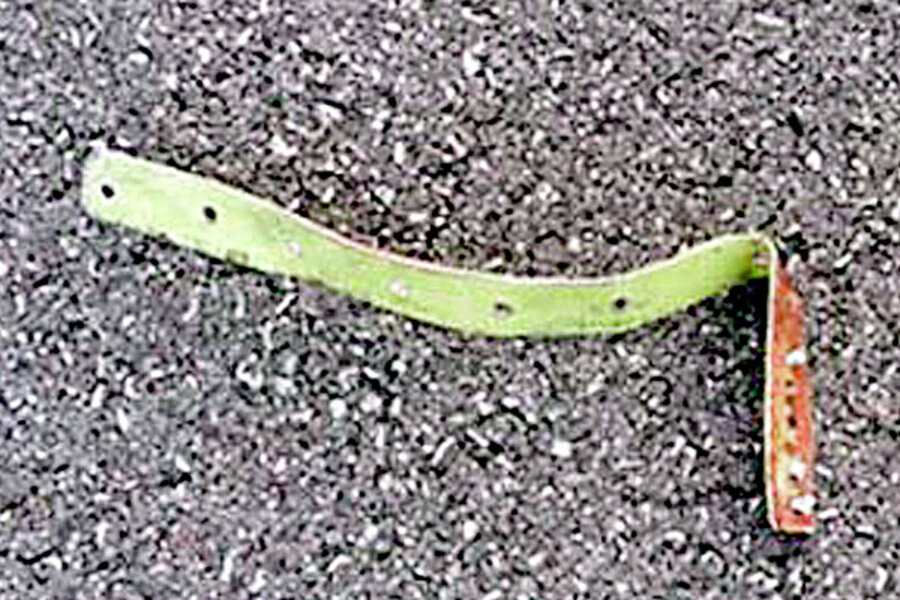What caused the 2000 Concorde crash?
Loading...
Flying from Paris to New York City in under four hours may sound futuristic. It’s actually history. The supersonic Concorde halved transatlantic flight time during its operations from 1969 until 2003, when the commercial jet was retired, in large part because of a crash in 2000 that killed 113.
Ten years on, the cause of Air France Flight 4590’s crash outside of Paris is the subject of a trial starting today in France. All 100 passengers, nine crew, and four people on the ground died when the drop-nosed jet crashed into a hotel on July 25, 2000, shortly after taking off from Charles de Gaulle airport.
The passengers were traveling on a flight to New York's John F Kennedy Airport to board a cruise.
Lawyers for Concorde are expected to argue that one of the jet’s tires was punctured by a small piece of metal that fell minutes earlier from a Continental Airlines flight. This was also the conclusion of an investigative report by French authorities, issued Jan. 15, 2002, finding that debris struck the underside of a wing and ruptured a fuel tank.
Continental’s lawyers are expected to argue that the Concorde was on fire before striking the piece of metal. The company’s principal defense lawyer is Olivier Metzner, who is coming off a recent win representing former French Prime Minister Dominique de Villepin in his defense against charges of trying to smear President Nicolas Sarkozy.
In addition to Continental Airlines, two Continental employees and three Concorde employees are on trial for involuntary manslaughter.
David Learmount, an aviation expert for Flight International in London, says it is unlikely that Concorde's designers or Continental's engineers will be found criminally negligent.
"The strip of titanium allegedly dropped from a Continental DC-10 could be seen as a shoddy piece of workmanship, but the outcome – even if the court accepts the strip as being the proven cause of the tyreburst, which it may not – could not have been predicted," Mr. Learmount writes in an e-mail. "I'd put a few dollars on no-one being a criminal."
The Concorde lawsuit, Learmount says, seems more about creating an interesting case for lawyers to indulge on.
"Early in the Concorde crash investigation Ken Smart, heading the UK team working with the French investigators, bemoaned the fact that, at the awful accident site, the police and judiciary were standing around not knowing what to do; but as soon as one of the professional investigators showed an interest in a piece of debris it was removed and locked up as evidence for the prosecution," Learmount writes on his blog for Flight International magazine.
"Not a great way to find out what happened so as to prevent a recurrence, but, hey, this is apparently about creating a fascinating case for lawyers to work on for years to come."
The Independent offers this run-down of the charges against the defendants in the case.
This isn’t the first time the Concorde crash made it to court. In 2001, French families of the deceased lodged suit in Harris County District Court, Texas, against Continental Airlines and the Goodyear Tire & Rubber Company, the maker of the Concorde's burst wheel. The case was settled out of court and the case was closed in mid-2006. The Law Office of Kevin Krist, who represented some of the plaintiffs, says the settlement was confidential and declined comment to the Monitor.
Exorbitant fuel costs made the Concorde uneconomical. In 1989, a round-trip ticket from London to New York cost about $6,500. By 2003, airfare had soared to as high as $12,000 for a round trip between New York and Paris. (For the Monitor's history of supersonic commercial aviation in the US, click here).
The 2000 crash hastened the demise of a jet that shook homes when it blasted through the sound barrier to cruise speeds of 1,350 miles per hour. As its makers, Air France and British Airways, were taking the plane out of service in 2003, the Monitor found that Americans had lost interest in supersonic flight services aboard the world’s fastest commercial jetliner. Few bothered to observe the jet’s final flight over Boston.
“Probably if a space shuttle was flying over Revere Beach, people would come out here,” one of the few observers of the final flight said with a shrug. “But I don't think anyone really cares about this.”







